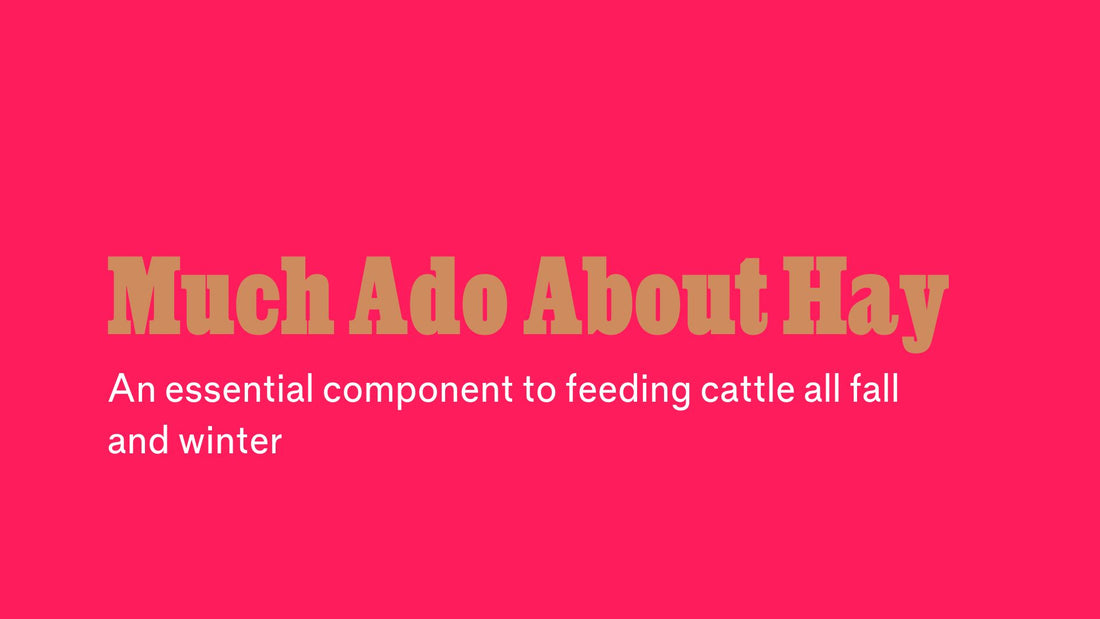Hay! It's not only for horses.
Hay tasks are a large part of fall and winter prep for farmers. Hay is cut and baled after growing all summer, bottling the energy from those sunny days to feed cattle through winter. Depending on the farm, hay can either be more pricey to buy or make. As grass stops growing in the cooler months, farmers need to figure out how to feed their animals in the winter when no grass is growing. Some farmers have enough land where they can not graze the grass through most of the winter, so when it stops growing, it’s still tall (this is called stockpiling) and then cattle can graze the dormant grass. Most farmers, though, either grazed all their grass or cut it during the warm weather and need to feed the grass they cut (hay) or buy in hay from other farms.
Hay is one of the most weather-dependent crops on a farm (often called one of the most difficult decisions a farmer has to make). Depending on mother nature’s attitude, hay-making is usually going on from late May to early June until the start of fall. If she cooperates, farmers can get 3 or 4 “cuttings” of hay across the summer, but they could just get one, or none! The key to initiating a cutting is making sure your hay is dry. This might make you think “rain rain go away,” and while that’s partly true, farmers need that rain to grow grass that’s tall enough to harvest. But in order to find that haymaking sweet spot, you need a week without rain combined with hot temps and low humidity. Not always easy to come by!
Wet Hay Hacks
- Go for haylage or silage instead (they can sustain higher moisture levels)
- Maximize sunlight time in the fields
- Wider, flatter windrows (Enter: tedders!)
- Utilize a hay temperature probe to monitor temps of bales
Hay Cutting 101
From May to early fall, hay baling is likely on the minds of many farmers. After drying out in the summer heat, by the fall almost all hay has been baled already, and farmers are now focusing on taking inventory, transporting or buying hay. Before getting to this point, farmers follow a pretty standard hay cutting process to make sure they’re ready for those business decisions come fall.
Each hay cutting involves 3 pieces of tractor-pulled equipment. 1) a hay bine to cut the pasture, 2) a rake to turn the grass over one or more times as it dries into hay over a few days period, and then again to collect it into a “windrow” for the baler and 3) the baler is then used to, yep, you guessed it, bale the hay once it’s dry. This whole process ideally takes less than a week. An optional 4th piece of tractor equipment is a tedder, as mentioned above, that can be used to spread out and fluff the hay mid-process (rather than using a rake) to help it dry faster. This process is repeated throughout the summer as the grass continues to grow. Farmers do it as many times as they can depending on the weather. Once they’ve completed their last cutting (typically early fall), the cleaning of these machines adds another to-do to farmers’ fall lists.
All this hay and no time for play makes for a busy season for our farmers—but all in service of happy healthy cattle through the colder months.
Stay cozy out there, meaties!

